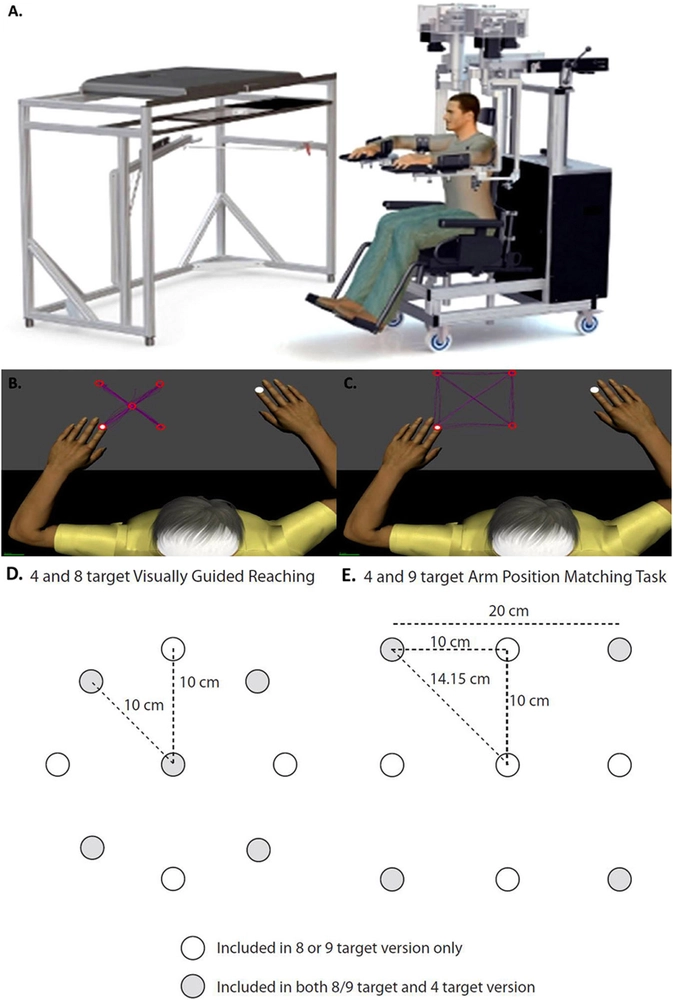Movement kinematics and proprioception in post-stroke spasticity: assessment using the Kinarm robotic exoskeleton

Background
Motor impairment after stroke interferes with performance of everyday activities. Upper limb spasticity may further disrupt the movement patterns that enable optimal function; however, the specific features of these altered movement patterns, which differentiate individuals with and without spasticity, have not been fully identified. This study aimed to characterize the kinematic and proprioceptive deficits of individuals with upper limb spasticity after stroke using the Kinarm robotic exoskeleton.
Methods
Upper limb function was characterized using two tasks: Visually Guided Reaching, in which participants moved the limb from a central target to 1 of 4 or 1 of 8 outer targets when cued (measuring reaching function) and Arm Position Matching, in which participants moved the less-affected arm to mirror match the position of the affected arm (measuring proprioception), which was passively moved to 1 of 4 or 1 of 9 different positions. Comparisons were made between individuals with (n = 35) and without (n = 35) upper limb post-stroke spasticity.
Results
Statistically significant differences in affected limb performance between groups were observed in reaching-specific measures characterizing movement time and movement speed, as well as an overall metric for the Visually Guided Reaching task. While both groups demonstrated deficits in proprioception compared to normative values, no differences were observed between groups. Modified Ashworth Scale score was significantly correlated with these same measures.
Conclusions
The findings indicate that individuals with spasticity experience greater deficits in temporal features of movement while reaching, but not in proprioception in comparison to individuals with post-stroke motor impairment without spasticity. Temporal features of movement can be potential targets for rehabilitation in individuals with upper limb spasticity after stroke.
Publisher URL: http://link.springer.com/article/10.1186/s12984-019-0618-5
Open URL: https://jneuroengrehab.biomedcentral.com/track/pdf/10.1186/s12984-019-0618-5
DOI: 10.1186/s12984-019-0618-5
Keeping up-to-date with research can feel impossible, with papers being published faster than you'll ever be able to read them. That's where Researcher comes in: we're simplifying discovery and making important discussions happen. With over 19,000 sources, including peer-reviewed journals, preprints, blogs, universities, podcasts and Live events across 10 research areas, you'll never miss what's important to you. It's like social media, but better. Oh, and we should mention - it's free.
Researcher displays publicly available abstracts and doesn’t host any full article content. If the content is open access, we will direct clicks from the abstracts to the publisher website and display the PDF copy on our platform. Clicks to view the full text will be directed to the publisher website, where only users with subscriptions or access through their institution are able to view the full article.


